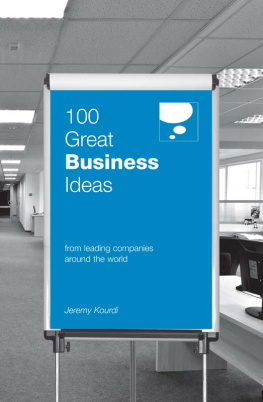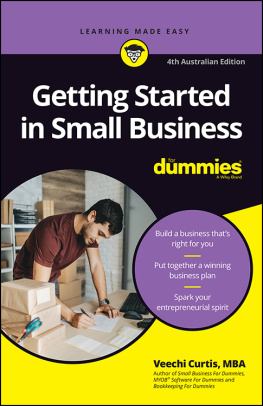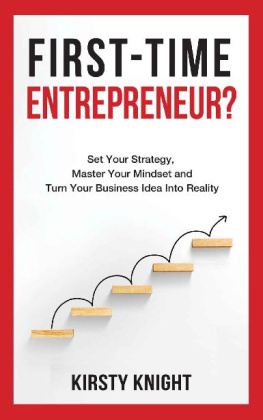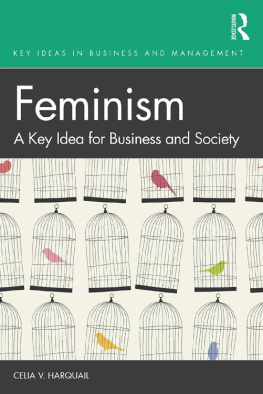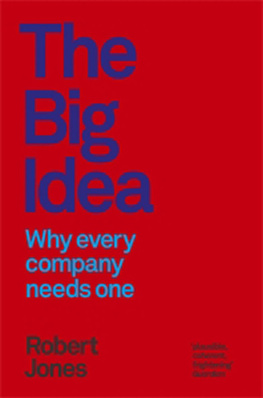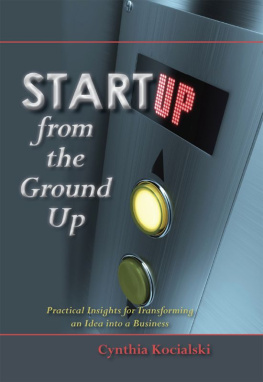CONTENTS
About the Author
Carol Kennedy, former executive editor of Director, and voted Business Writer of the Year (1990) is a well-known writer on management, business and social history.
Also by Carol Kennedy
Business Pioneers (Published in hardback as The Merchant Princes)
Guide to the Management Gurus
Managing with the Gurus
ICI: the Company that Changed our Lives
Mayfair: A Social History
Harewood: the Life and Times of an English Country House
The Entrepreneurs
ACKNOWLEDGEMENTS
I am grateful to the following publishers and publications for permission to use quotations or other referenced material: Nicholas Brealey (Organizing Genius by Warren Bennis and Patricia Biederman and Digital Capital by Don Tapscott, Ticoll and Lowy); Fast Company for the IBM Speed Team case study, Faster Company, in its May 2000 issue; the Financial Times; David Wilson of Texere (Blood, Sweat and Tears by Richard Donkin; Surfing the Edge of Chaos by Richard Pascale, Open Minds by Andy Law, Future Revolutions by David Mercer and Weaving the Web by Tim Berners-Lee); Penguin Books (Business@the Speed of Thought by Bill Gates).
My thanks go also to W. Chan Kim and Rene Mauborgne, professors of strategic management at INSEAD, for permission to summarise their six utility levers findings from articles published in the Harvard Business Review and the Financial Times; to Belbin Associates for permission to quote from Meredith Belbins The Coming Shape of Organizations; to Michel Syrett and Jean Lammiman for permission to draw on their reports Innovation at the Top: Where do directors get their ideas from? and Entering Tiger Country: How ideas are shaped in organisations, and for access to some of their research for Management Development: making the investment count (Economist Books, 1998). Michel was also of inestimable help in shaping Chapters 2 and 10 and a source of sustained encouragement and inspiration throughout, as was my great mentor and friend, the late George Bull, OBE. Dr. Bruce Lloyd, professor of strategic management at South Bank University, London, was an unfailing source of advice and encouragement, as was Clare Smith, my ever-helpful editor at Random House Business Books. Cathy Castillo and Barbara Buell of Stanford University Graduate School of Business opened doors for me and were an invaluable source of access to key members of the faculty.
The following distinguished thinkers and academics generously gave of their time for interviews and discussions: Richard Pascale, Gary Hamel, Charles Handy, Kenichi Ohmae, Professor Sumantra Ghoshal of London Business School, Professors Jeffrey Pfeffer, Garth Saloner, Robert I. Sutton and Michael Ray of Stanford University Graduate School of Business; Professor Ronald A. Heifetz of the John F. Kennedy School of Government, Harvard University; Don Tapscott; John Seely Brown. Eric D. Beinhocker of McKinsey and Co. shared his valuable insights into the work of the Santa Fe Institute on living systems. Bill Drobny of Barclays Global Investors in San Francisco explained his system for getting projects delivered on time. Martin Bluck of General Electrics Global Xchange, formerly known as GE Information Systems, was immensely helpful in outlining GEs latest big ideas in the application of technology to the companys famous Work-Out system. Mark Goyder of the Royal Society for the Arts, Manufactures and Commerce helpfully brought me up to date on the Tomorrows Company project.
Any errors or omissions in my treatment of their contributions are mine alone, but I have made every effort to ensure there are none. The Recommended Reading list fills out many other sources I found of great help in writing this book.
Carol Kennedy, London, August 2001
INTRODUCTION
THE LURE OF THE BIG IDEA
MANAGEMENT, BORN AS a profession with the twentieth century, has for most of its lifetime been in love with the Big Idea. Just as with politics, its practitioners have perennially sought the road to salvation, the magic formula for prosperity, some grand vision that would rally people behind them. Since the centurys two biggest ideas that aimed to transform society, fascism and communism, turned into monsters that engulfed the world in revolution and total war, we should perhaps be thankful that todays political leaders have more mundane agendas, even if voters become apathetic as a result and pundits complain about a lack of vision.
In business, too, there are signs that big visionary theories may have had their day. Right from its birth in the 1900s, professional management has been seduced by the Big Idea, from Frederick W. Taylor persuading industry that it could be run with the science and precision of a stopwatch to the Taylorism of the 1990s known as business process re-engineering. Throughout the century management gurus have continued to search for ways to make business more efficient and workers more productive, swinging their focus from process to people and back again. If the ideas havent been as big as those in politics, they havent been as disastrous either, but the constant drive for better performance has often been counter-productive in human terms, and the obsessive short-term cost-cutting of the 1990s resulted for many businesses in a sort of corporate anorexia (a phrase coined by the gurus Gary Hamel and C.K. Prahalad) which prevented them from healthy regrowth when their markets came back.
Until around 1980 the stream of Big Ideas was a relative trickle, perhaps one or two in a decade, then it turned into a flood. Out poured tens of thousands of books and magazine articles, a dozen Harvard, Stanford and Massachusetts Institute of Technology professors became multi-millionaire gurus and ceaseless waves of change washed over the worlds biggest industrial companies. The catalyst was one book, In Search of Excellence by Tom Peters and Robert H. Waterman, which encapsulated the promise of world-beating performance in eight core practices that the authors decided were shared by the best companies in America. Although two-thirds of those companies fell from grace within five years, the book still sells in its original, unrevised form because enough people find that the eight mantras still work, though much modified by the hectic competition and change of the new economy.
The formula of Excellence was irresistible, and ever since its low-key launch in 1982 it caught on by word of mouth among chief executives few managers have been immune to the lure of the magic bullet, the hope that this time, just possibly, the latest thought leaders of management theory will have found the password to better performance, bigger quarterly profits, massive shareholder value.
If only. Its not just a case of the latest business blockbuster promising seven steps to heaven on the airport bookstalls, but Big Ideas do filter down from the books and the business schools to the management consultancies, those exponential money machines that girdle the world with their change programmes (many of which fail or dont last) and their promises of a better tomorrow. Their bills are enormous. Some organisations have never recovered from the attentions of consultants, as James OShea and Charles Madigans book Dangerous Company revealed in the late 1990s, while others, like the BBC, continually reinvent the wheel with successive generations of management throwing out the last consultancy Big Idea and calling in the mighty McKinsey yet again. Its all rather like horoscopes in the popular press: for a short time they give the illusion of accurate guidance, but if they prove wrong theres always another one the next day.
Next page


